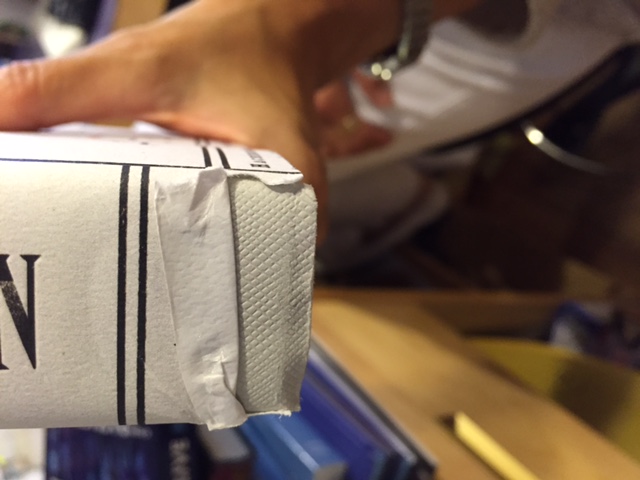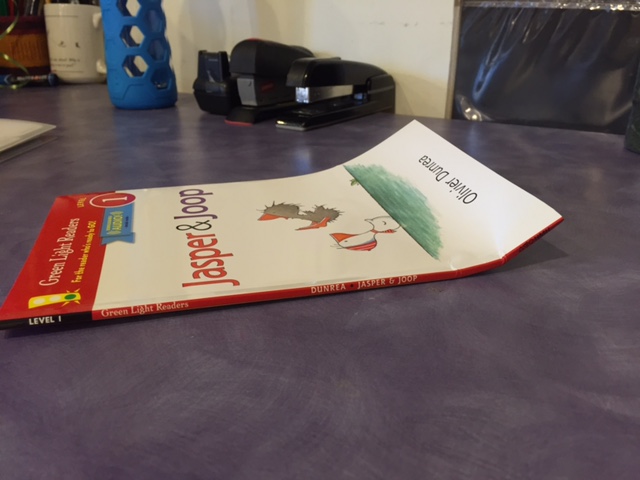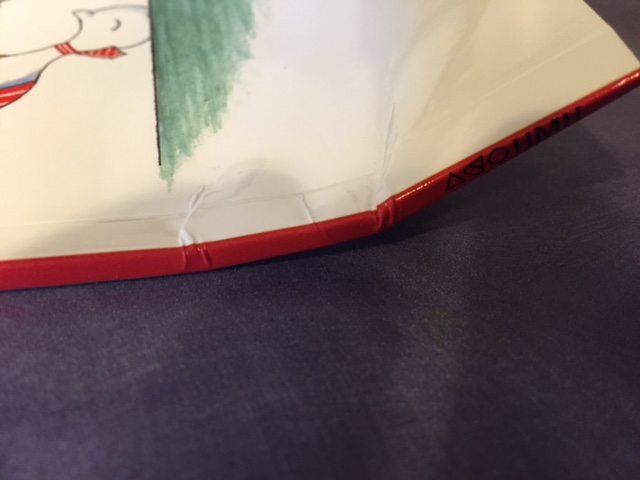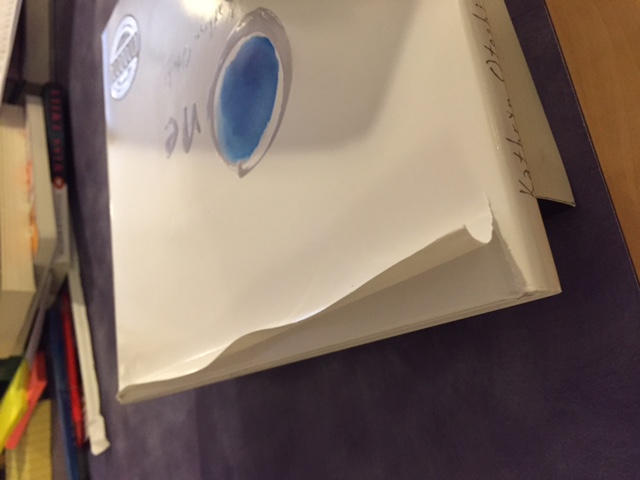 Every day, shipments arrive, many of which contain damaged books. We have to call the publishers to report the damages, and they issue credits or — occasionally — send a call tag for the more expensive items that arrive damaged. Damages are expensive for publishers and cost bookstores processing time and disgruntled customers (often, it seems that the $40 hardcover special order is the one that arrives with a torn dustjacket, squished corner, or bent boards).
Every day, shipments arrive, many of which contain damaged books. We have to call the publishers to report the damages, and they issue credits or — occasionally — send a call tag for the more expensive items that arrive damaged. Damages are expensive for publishers and cost bookstores processing time and disgruntled customers (often, it seems that the $40 hardcover special order is the one that arrives with a torn dustjacket, squished corner, or bent boards).
Often, these damages are caused by preventable packing errors. Today, we had a paperback easy reader arrive curled in half because whoever closed the box during packing had folded the book into one of the flaps.


Often, book jackets are torn because of the way books slide and collide in the box. This one also came in today, from a different warehouse:

We learned a great shipping technique from one of our first employees, Roman, who had worked solely as a book receiver at a big Boston bookstore. He showed us that placing books spine-to-spine rather than spine-to-open-side prevented many damages because spines bumping against one another don’t do nearly as much harm as open pages and covers catching on each other. It sounds obvious when you think about it, but I rarely see books packed that way.
 With the smooth spines next to each other and the walls of the cardboard box against the more vulnerable open sides of the books, the books are better protected.
With the smooth spines next to each other and the walls of the cardboard box against the more vulnerable open sides of the books, the books are better protected.
You can see how, in the second photo, damage is a little more liable:
 Worst of all is this:
Worst of all is this:

I have no idea how packing in the warehouses works. I can only imagine how quickly those hardworking book packers must be going in order to fulfill all the orders coming in, and it’s truly amazing to me how few fulfillment mistakes there are even in orders involving dozens of single titles. Maybe damages cost publishers less than it would cost to change packing methods or slow the packing process down a bit. But if our small store receives one to five damaged books almost every day, that’s got to add up with damages across the country.
It might also be worthwhile for publishers to see how books are getting damaged. If booksellers sent in a quick photo of their damages when they called the credit department, the visual information might be useful for warehouses to change some of their methods.
Maybe these ideas have been tried and rejected for various reasons, but speaking as a bookseller who hates to see ruined books — and hates to spend my staff’s time on reporting them, replacing them, disappointing waiting customers, and spending more time to follow up to make sure credits were issued — it seems worth a mention.

It seems like books come damaged from publishers more and more often. I’d say 50% of the shipments my literary agency has received this year have contained at least some damaged books. I don’t know if there were cuts in shipping departments, new personnel and methodology, or what, but it’s worrisome.
Erin, are these comps or orders? So often, the comp books are damages, and I understand that. But paid orders should arrive unscathed. As Carol mentions, it’s the sliding-around that creates the most damages! Often, we receive shrink-wrapped shipments, but the shrink wrapping is loose and doesn’t keep the books from sliding around and banging into each other. Books are pretty easy to protect if they are packed snugly. I think publishers would save thousands upon thousands by investing more in training (and that brilliant poster idea of Chittenden’s)!
I was afraid it was me! We were just talking about this yesterday. It’s really been crazy the last couple of months, the number of damaged books I’m receiving. First of all, it breaks my heart to see good books hurt, but in addition, it’s so time consuming to deal with them, and there’s never enough time in a day as it is! Customers will not buy a book with a smashed corner (and I don’t blame them, at $20.00 apiece), and I can’t afford to eat the loss, so to the phone I go. (Cuts in customer service make it a long wait for assistance, usually.) More often than not, lately, the outside box is fine, so it’s not the shipping company’s fault. I always take photos, and offer to send them, but they’re almost never wanted. So very frustrating.
It’s definitely not just you. And it does seem to be getting worse!
Books are packed by low wage, high turnover staff. In busy times, their training may be minimal. v But that’s even more reason to have a poster, with clear graphics, of something like “10 Ways to Avoid Shipping Damages.” You already have several good ones. I would add, “Pack so the merchandise can’t move around in the container.”
You can really tell who’s invested in the training by how things are packed. It should be fairly simple for a warehouse to quantify the cost of training and the cost of damages, including all the paperwork to recover once a book is hurt, and the cost of shipping it to a remainder dealer.
Exactly, Carol!